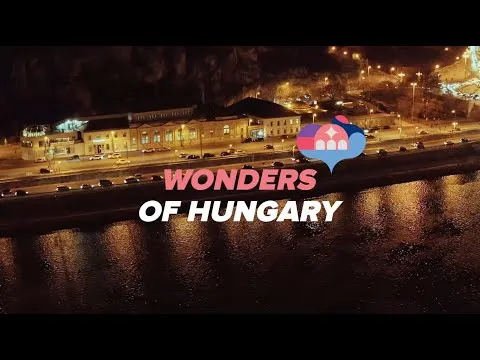Rudas Thermal Bath and Swimming Pool
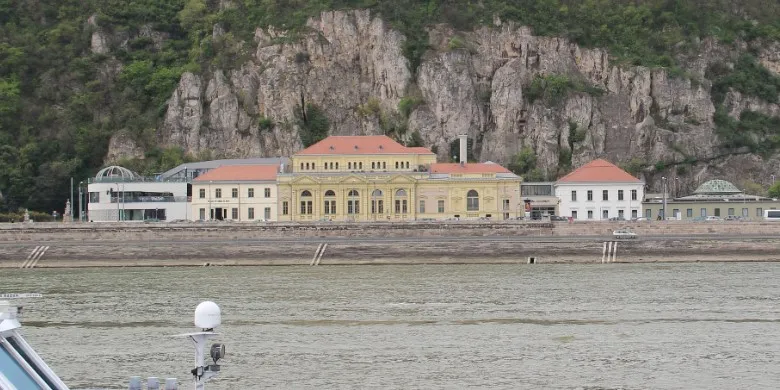
H-1013 Budapest, Döbrentei Square 9.
The next thermal bath is the Rudas, this one was the most often visited by me, mostly because of its location - and I have plenty pictures about it.
History, construction
It is located on the right side of the Danube (Buda), therefore in a relatively less busy area, but still close to the city center. The historical background of its foundation and construction is not fully known, nor is the origin of its name. There are 3 main theories without real evidence. In fact, they're all just guesswork. In addition, the spa has been renamed countless times, mostly as a result of various owner changes.
The first references to the spa as a nationally and Europeanly known facility date back to the 13th century. It is only known for sure from the time of the Turkish occupation (16th century). In many places - mistakenly - its construction is also associated with the Turks, especially on English-language sites I have come across this. Perhaps one of the best refutations of this, which can still be seen today, the dome of the Turkish baths is almost without exception held by walls, but the main dome of Rudas (10 meters in diameter) is held by columns, numbering 8.
Official history between 1556 and 1578 names the Turkish Ali Pasha and Sokoli Mustafa Pasha as the order of the restoration of the bath (and building the dome). Picture below show a small monument in the building in the memory of Sokoli Mustafa Pasha.
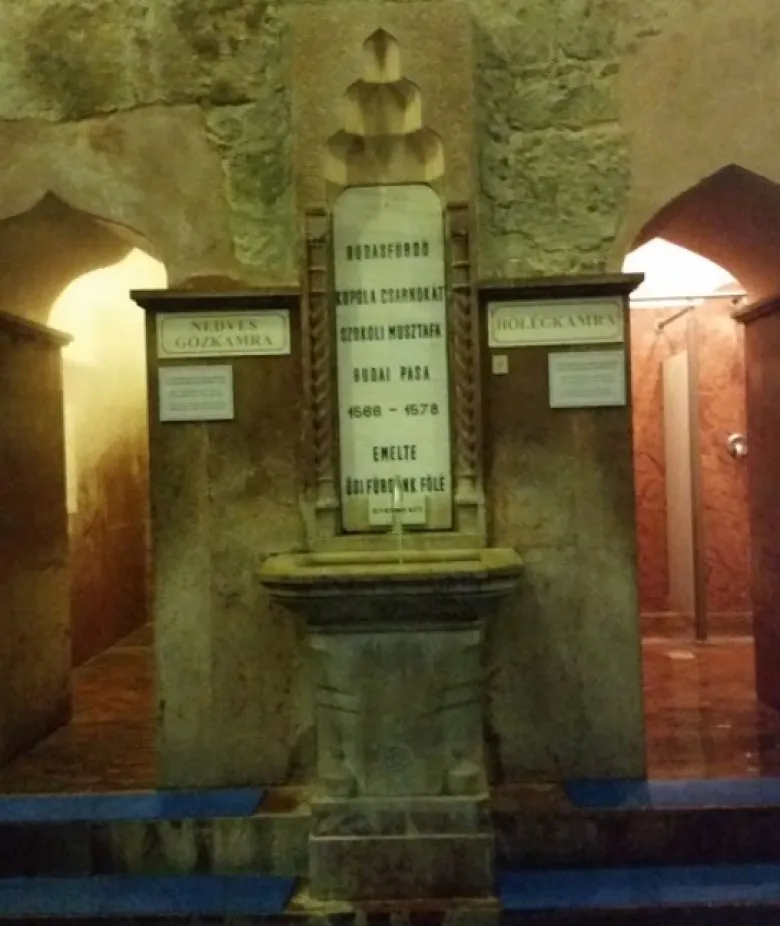
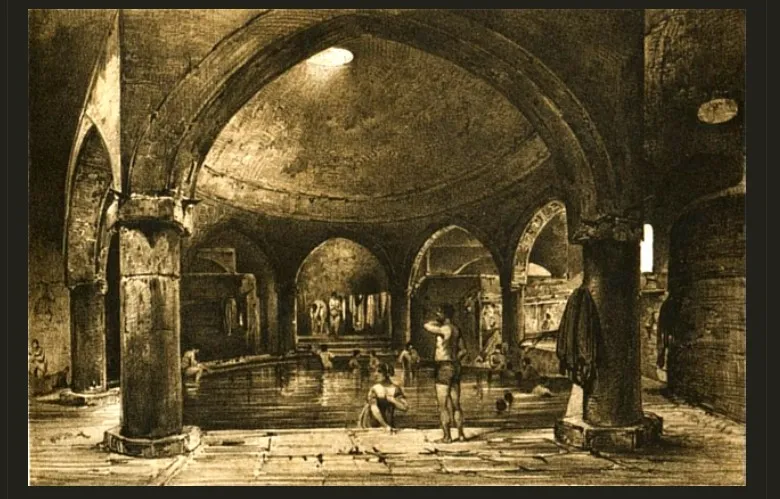 Source: Miklós Horler: Scheduled Monuments of Budapest, 1955
Source: Miklós Horler: Scheduled Monuments of Budapest, 1955
After the recapture of Buda (02.09.1686., after 145 years of occupation) it was expanded and renovated several times (1711, 1794, 1804), one of the most significant starts in 1880, based on the plans of Miklós Ybl, one of Europe's leading architects in the mid to late nineteenth century as well as Hungary's most influential architect during his career. The building is expanded to the north and south, the facade facing the Danube expands from 23 to 26 axes. In 1894-96 the current swimming pool of the spa was built. It is rare that bath building plans, dated before 20th century, are still available.
 Source: https://ybl.bparchiv.hu/
Source: https://ybl.bparchiv.hu/
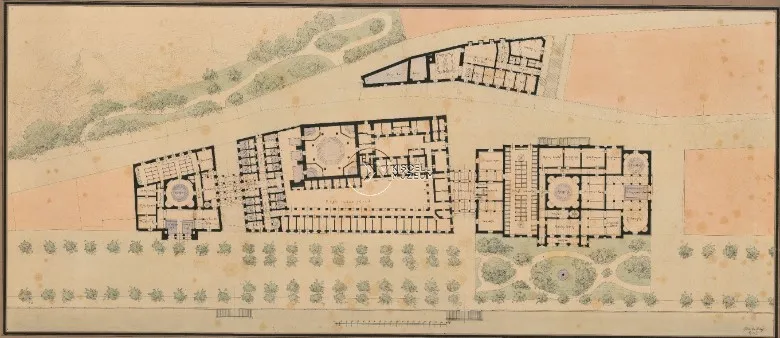 Source: https://ybl.bparchiv.hu/
Source: https://ybl.bparchiv.hu/
Between the 2 world wars only maintenance work was carried out on the building together.Nevertheless, it was officially declared a thermal bath in 1933.
During World War II., the northern part was completely destroyed and the building had to be demolished on the Danube side. However, the Turkish wing got away with it without major damage. (Perhaps that's why many foreign sources also refer to it as built by Turks, as this part is the oldest wing of the building that still stands today.)
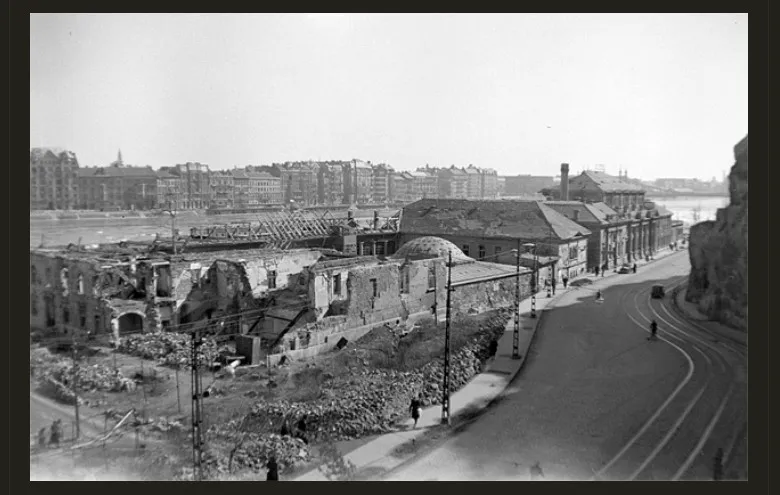 Source: http://muemlekek.info/muemlek/rudas-furdo.php
Source: http://muemlekek.info/muemlek/rudas-furdo.php
The Rudas bath was renovated in 1951-52 according to the plans of György Tőkés, but the neoclassical wing was inexcusable. In 1954, a hospital ward was created, in 1965 a drinking hall. 2 drinking taps below.
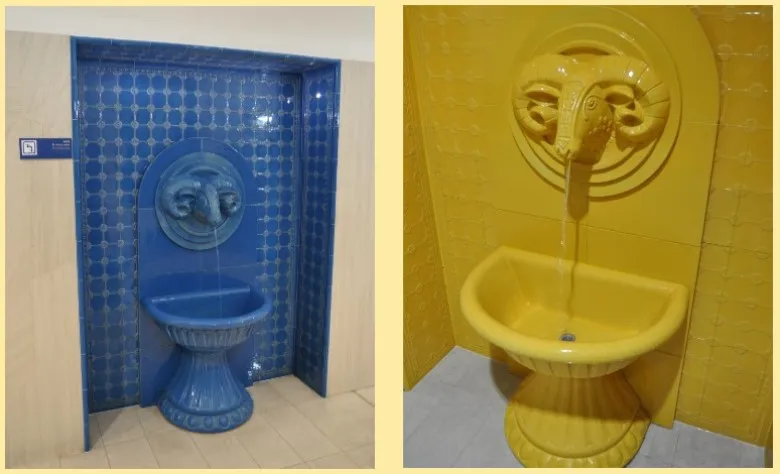
After the demise of the Iron Curtain, the building was renovated again, but the neoclassical part of the bath was not reconstructed. In 2014, a wellness area will be created, and a spectacular jacuzzi will also be built on the roof terrace.

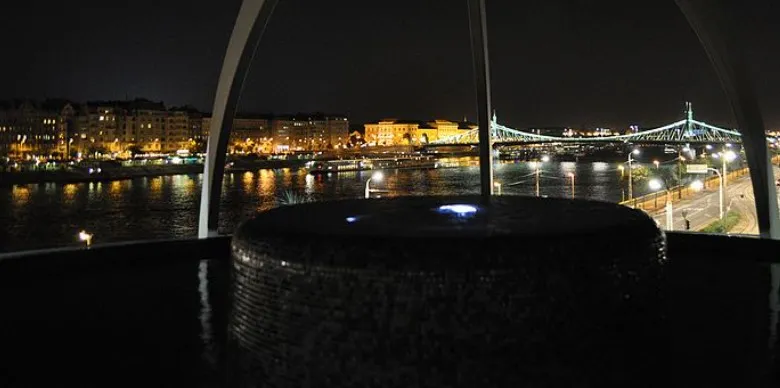
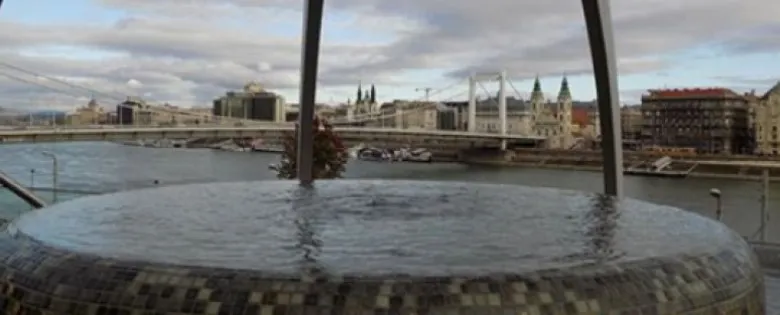
For me, it also gives the impression of a completely different building both from the outside and from the inside, more reminiscent of an office building, hotel, castle, museum. Yet it is a bath, it has always been, although at the end of the 19th, beginning of the 20th century there was also a hotel for a short time.
It's also pretty hard to categorize, I think it's completely unnecessary as long as someone visits quickly realizes why. (To visit the entire building, you need to buy a separate ticket.)
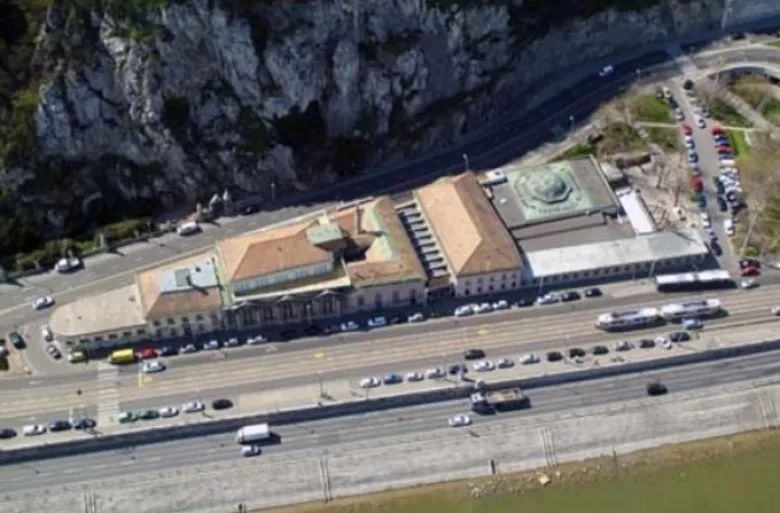 Source: Peter Meleghy: Spas of Budapest, Corvina, 2012 (The picture shows the building before the 2014 renovation.)
Source: Peter Meleghy: Spas of Budapest, Corvina, 2012 (The picture shows the building before the 2014 renovation.)
The pools
The main building has 3 floors, in the basement and on the ground floor are the pools. The bath has 6 thermal pools and 1 swimming pool (approx. 20 m long, 29°C thermal water). There is also a sauna in the swimming hall. In a separate part of the building is the steam room. Here is Budapest warmest thermal pool (42 °C). I can't be in it for more than 5 minutes...
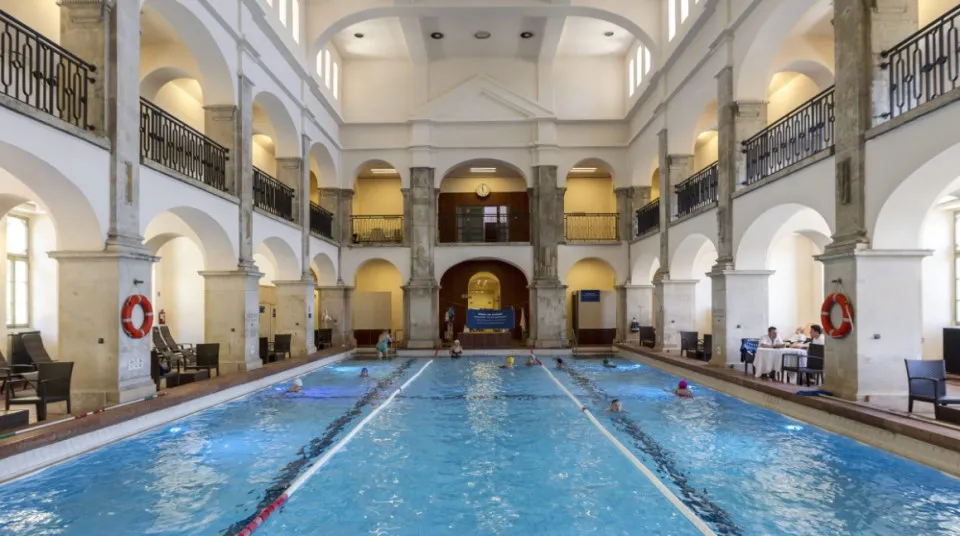
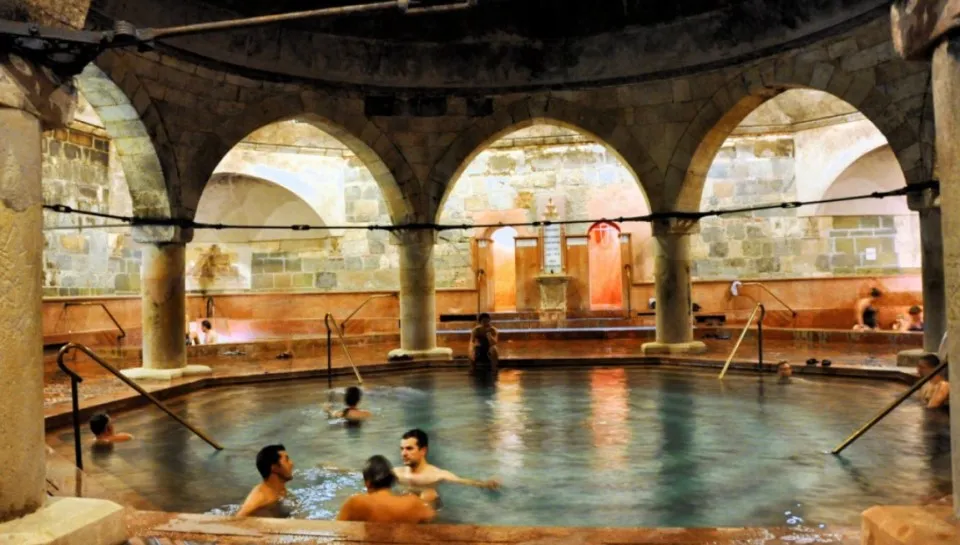
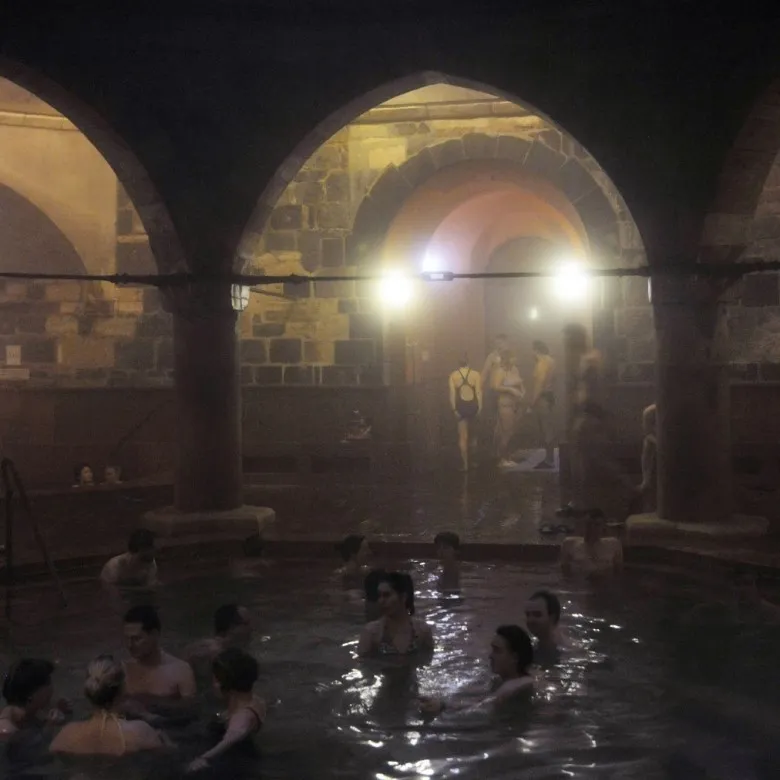
The steam room has three more hot water pools (30, 33, 36 °C), one lukewarm water pool (28 °C) and one cold water pool (16 °C submersible pool).

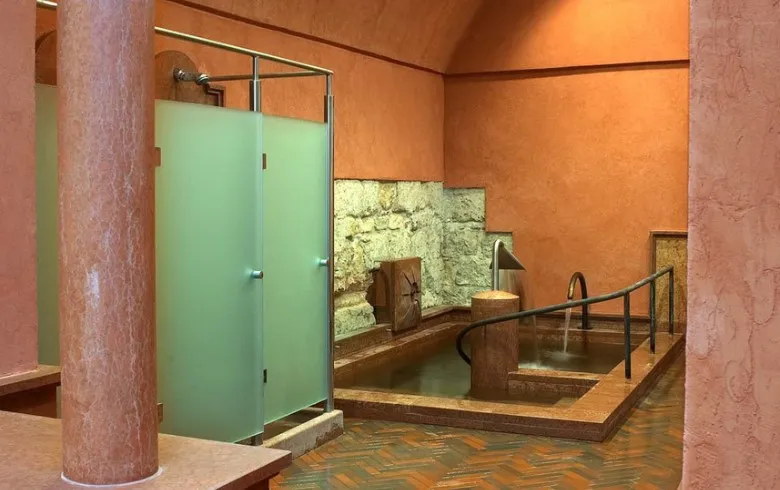
The spa's medicinal water
There are 21 hot, thermal springs near the Rudas bath. In the drinking hall there is water from 3 springs. For 90 years it was also available in bottled form under the brand name Harmatvíz (Dew) water, during this period there was also a bottling plant in the building.
The "radioactive" thermal water contains sodium, calcium magnesium bicarbonate and sulfate, and its fluoride ion content is very significant. Of course, this does not mean a toxic effect, only waters with a higher than average radon content are called this way, which is not responsible for the medicinal effect itself, but together with the other ingredients. By the way, it is quite rare, in addition to the fact that it is the most common radioactive element from a natural source. I never understood in detail how that could be. There are only 4 of them in Hungary, only 2 "radioactive" from more than 100 thermal sources in Budapest.
Bathing is recommended for people with degenerative diseases of the joints, chronic and semi-acute arthritis, herniated discs, neuralgia, as well as lime deficiency of the skeletal system.
Interesting facts
In the spa, weekdays are divided into women's and men's days, only on weekends it can be used by both gender. It is also open Friday and Saturday night.
After the revelation of the Martinovich conspiracy (in 1794 it was a secret movement based on the ideas of the French Revolution), several of those involved in the conspiracy ended their lives here. Also in the 19th century, many people committed suicide in the Rudas. (It's not a tourist lure fact, so it's not even advertised very much.)
The first scenes of the American film Red Heat, which premiered in 1988, were filmed here.
Personal opinion
The building is quite unique, it carries the architecture, styles of at least half a millennium. It is unfortunate that more than half of them perished in World War II.
Especially after the latest renovation, it is not very flashy from the outside, unfortunately, they have done this with several baths in Budapest and in the countryside in recent years. I mean, they've done a completely new or seemingly new part, a renovation that doesn't fit into the big picture. Perhaps the most acceptable for this building, as it has been renovated, remodeled, demolished, rebuilt countless times. However, when illuminated in the evening in summer, it looks great from the busier Pest side.
Relatively not as busy as the others - if you time well - mainly because it is located on the Buda side. In riverboat slave times, I used to visit here most of the time on Fridays at night, on weekends it is even busier in winter than in summer. Getting into the rooftop jacuzzi during peak periods is almost impossible, I mean if you don't want to sit in it with 20 other people, more crowded than on public transport.
The positive side is that not many tourists know it, I mean, in addition to those who want to go here purposefully, and who also know it, since it is on the Buda side, there are not many people who go through because of this, especially not at night. In addition, it is still the 4th busiest bath in the city, with an average of more than 350 thousand guests per year. I have never used a sauna or wellness area, my friends also had a positive opinion about that.
I can recommend it to those who want to find the calmest thermal bath in the busy season, are interested in what the centuries-old bathing culture looks like in 1 place or would like to visit it directly because of the special water composition, or those who want to include a bath on the return journey after visiting the sights on the Buda side.
Sorry for the quality of the images, but I need to significantly reduce their size so that I can upload at least 15. There will be a higher resolution later.
Under which image I didn't cite a source, they were all made by me.
There is a good virtual tour on this link (the site run by the Hungarian Tourism Agency):
https://www.termalfurdo.hu/furdo/rudas-gyogyfurdo-es-uszoda-12
Also a short video made by the Hungarian Tourism Agency:
Sources:
Csaba Meskó: Thermal Baths, Budapest, 1998
Peter Meleghy: Spas of Budapest, Corvina, 2012
Miklós Horler: Scheduled Monuments of Budapest, 1955
